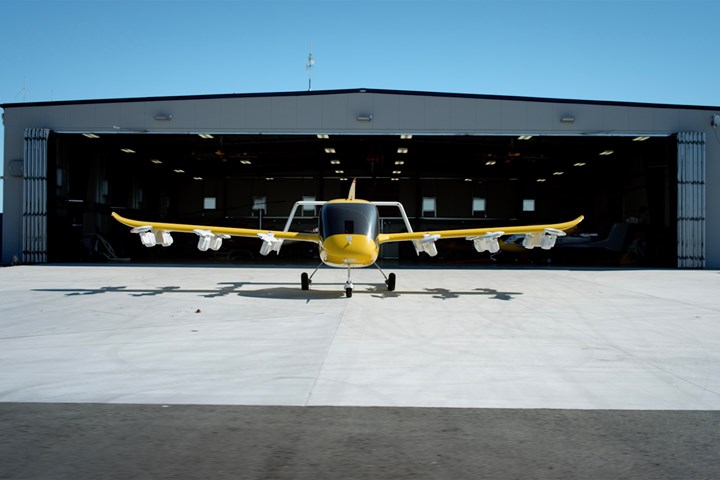NASA, Wisk partnership accelerates UAM capabilities
The partnership will initially address critical National Campaign safety scenarios, and create a framework for autonomous passenger flight on a national level.

Photo Credit: Wisk
It was reported on Nov. 16 that Wisk (Mountain View, Calif., U.S.) an urban air mobility (UAM) company, is teaming with NASA in the first partnership between the two organizations to focus on the safe integration of autonomous aircraft systems into UAM applications at a national level.
The partnership is part of NASA’s Advanced Air Mobility National Campaign strategy to develop key guidance for UAM operations, while addressing key challenges, such as certification and standards development, in an effort to accelerate U.S. leadership in emerging automated aviation technology. Specifically, the partnership will initially address critical National Campaign safety scenarios with a focus on autonomous flight and contingency management, including collision avoidance and flight path management.
Through the partnership, NASA and Wisk intend to execute on optimized opportunities to evaluate architectures, perform simulation studies and develop an overall validation framework that can be leveraged for autonomous flight assessments. This will be done in close cooperation with industry standards organizations, and may include guidance on airspace structure, flight procedures, minimum performance requirements for participating aircraft and standards that will influence the evolution of autonomous systems.
“Our partnership with NASA will bring together our expertise in autonomy with the unmatched technical capabilities of NASA,” says Gary Gysin, CEO of Wisk. “The frameworks and recommendations developed through this collaboration will not only advance autonomous passenger flight but also increase the overall safety of aviation.”
Robert Pearce, Associate Administrator for NASA’s Aeronautics Research Mission Directorate, adds, “Wisk brings a tremendous amount of experience in eVTOL [electric vertical take off and landing] vehicle development, automation technologies and flight test, and combines it with a safety-first mindset towards advancing autonomous flight. NASA believes our partnership with Wisk will help accelerate the realization of exciting new Advanced Air Mobility [AAM] missions.”
Since 2010, Wisk has been developing and testing its all-electric, self-flying aircraft, in an effort to create flight-based solutions that address the growing urban mobility crisis in a way that is effective, accessible, and sustainable.
Related Content
-
Cryo-compressed hydrogen, the best solution for storage and refueling stations?
Cryomotive’s CRYOGAS solution claims the highest storage density, lowest refueling cost and widest operating range without H2 losses while using one-fifth the carbon fiber required in compressed gas tanks.
-
Materials & Processes: Fabrication methods
There are numerous methods for fabricating composite components. Selection of a method for a particular part, therefore, will depend on the materials, the part design and end-use or application. Here's a guide to selection.
-
Infinite Composites: Type V tanks for space, hydrogen, automotive and more
After a decade of proving its linerless, weight-saving composite tanks with NASA and more than 30 aerospace companies, this CryoSphere pioneer is scaling for growth in commercial space and sustainable transportation on Earth.
















